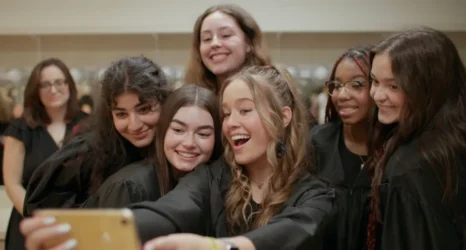Equal Pay Day on April 2 marked the day this year that women, on average, had finally earned what their male counterparts earned by the end of 2018. But for female athletes, the wage gap isn’t a matter of months. For women in professional sports, catching up to the earnings of their male peers would take years.
Professional women’s soccer players, for example, work harder and perform better than the men yet earn much less. The women have won four Olympic gold medals; the men have won none. The women have won three World Cups; the men have won none.
The U.S. women’s soccer team is ranked top in the world. Yet the USWNT players are paid at a rate of just over one-third of what the men get.
The pay gap in basketball is much worse. WNBA players make $71,635 on average, while the average NBA salary is $6.4 million. Last year’s No. 1 WNBA draft pick, A’ja Wilson, is earning just $52,564. And bonuses amplify this discrepancy.
In the March Madness basketball tournaments, the NCAA gives the men’s teams’ conferences over $1.6 million for each win, while the women’s teams get absolutely nothing for theirs. Thousands of people attend the women’s tournament; millions watch their games on television. The NCAA receives millions of dollars from advertisers. How does the NCAA come to the conclusion that the women’s games have no value?
The NBA justifies these differences by pointing to revenues: The men have larger audiences and more lucrative broadcast rights deals. But the pay rates on revenue differ as well: NBA players receive 50 percent of league revenue while WNBA players receive an estimated 25 percent of their league’s revenue.
Even when women earn more revenue than men, they are paid less. According to a pay equity lawsuit filed last month, the U.S. women’s soccer team played more games and brought in more revenue in 2017 than the men, yet U.S. Soccer still paid the women significantly less than the underperforming men.
This undervaluing is even more evident in the media coverage of women’s sports. According to one study of sports television coverage in Southern California, women and girls account for over 40 percent of athletes, yet they receive less than four percent of the coverage on news shows. The study’s authors—Cheryl Cooky, Michael A. Messner and Michela Musto—found a “stark contrast between the exciting, amplified delivery of stories about men’s sports and the often dull, matter-of-fact delivery of women’s sports stories.”
Print media coverage is also dismal. We did our own count of stories in the sports section of USA Today from March 22 to April 2 during March Madness. Over this 12-day period, there were 92 stories—82 about men and 10 about women. Of the 89 photographs of athletes, only four were of women. On the front page, there was only one photograph of a woman over the entire 12-day period while there were 37 photographs of men. There was only one front-page story about a female athlete while there were 31 stories about male athletes. On March 25, two full pages were dedicated to the bracket for the men’s tournament, with only a quarter-page for the women’s tournament. On March 28, there was no mention of women’s sports at all, including the women’s basketball tournament.
This neglect of women’s sports also shows up in the social media presences of organizations that are supposed to be promoting women’s sports. On March 25, the NCAA tweeted, “When you find out there are no #MarchMadness games until Thursday,” with a clip of the Parks and Recreation character Ron Swanson throwing his computer in a dumpster. Seattle Storm forward Breanna Stewart responded: “Sounds about right, coming from a page that has posted nothing about the women’s tournament. How can we get others to respect us when the NCAA doesn’t?! There was 8 Women’s games on the 25th.”
This disrespect of female athletes—whether by the NCAA, USA Today, U.S. Soccer or the NBA—is an important reason for the vast pay gap between men’s and women’s sports. Whether in a paycheck, on television, in print media or on social media, we need to do better to recognize the value and power of women in sport.
This piece originally appeared in Forbes. Republished with author permission.





